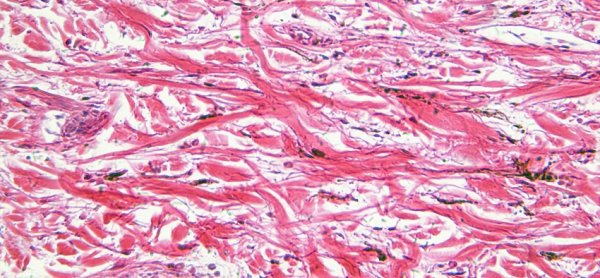 SAN FRANCISCO, CALIFORNIA—It had been thought that Northern Europeans developed light skin in order to absorb more UV light to process more vitamin D, necessary for healthy bones and immune function. But a new study conducted by a team led by professor of dermatology Peter Elias from the University of California, San Francisco, shows that the changes in skin’s function as a barrier to water loss is more likely. The skin-barrier protein filaggrin is broken down into a molecule called urocanic acid, which Elias says is the most potent absorber of UVB light in the skin. “It’s certainly more important than melanin in lightly-pigmented skin,” he explained. Elias and his team found that up to ten percent of normal Northern Europeans carry mutations in the filaggrin gene, compared to much lower mutation rates in southern European, Asian, and African populations. “Higher filaggrin mutation rates result in a loss of urocanic acid, correlated with higher vitamin D levels in the blood. Latitude-dependent variations in melanin genes are not similarly associated with vitamin D levels. This evidence suggests that changes in the skin barrier played a role in Northern Europeans’ evolutionary adaptation to Northern latitudes,” the study concluded. Pigmented skin would have offered ancestral humans living in sub-Saharan Africa protection against dehydration and infections. “Once human populations migrated northward, away from the tropical onslaught of UVB, pigment was gradually lost in service of metabolic conservation. The body will not waste precious energy and proteins to make proteins that in no longer needs.”
SAN FRANCISCO, CALIFORNIA—It had been thought that Northern Europeans developed light skin in order to absorb more UV light to process more vitamin D, necessary for healthy bones and immune function. But a new study conducted by a team led by professor of dermatology Peter Elias from the University of California, San Francisco, shows that the changes in skin’s function as a barrier to water loss is more likely. The skin-barrier protein filaggrin is broken down into a molecule called urocanic acid, which Elias says is the most potent absorber of UVB light in the skin. “It’s certainly more important than melanin in lightly-pigmented skin,” he explained. Elias and his team found that up to ten percent of normal Northern Europeans carry mutations in the filaggrin gene, compared to much lower mutation rates in southern European, Asian, and African populations. “Higher filaggrin mutation rates result in a loss of urocanic acid, correlated with higher vitamin D levels in the blood. Latitude-dependent variations in melanin genes are not similarly associated with vitamin D levels. This evidence suggests that changes in the skin barrier played a role in Northern Europeans’ evolutionary adaptation to Northern latitudes,” the study concluded. Pigmented skin would have offered ancestral humans living in sub-Saharan Africa protection against dehydration and infections. “Once human populations migrated northward, away from the tropical onslaught of UVB, pigment was gradually lost in service of metabolic conservation. The body will not waste precious energy and proteins to make proteins that in no longer needs.”